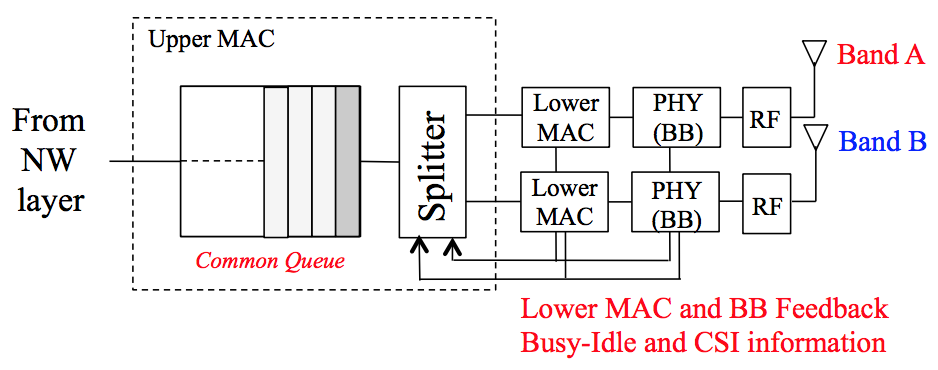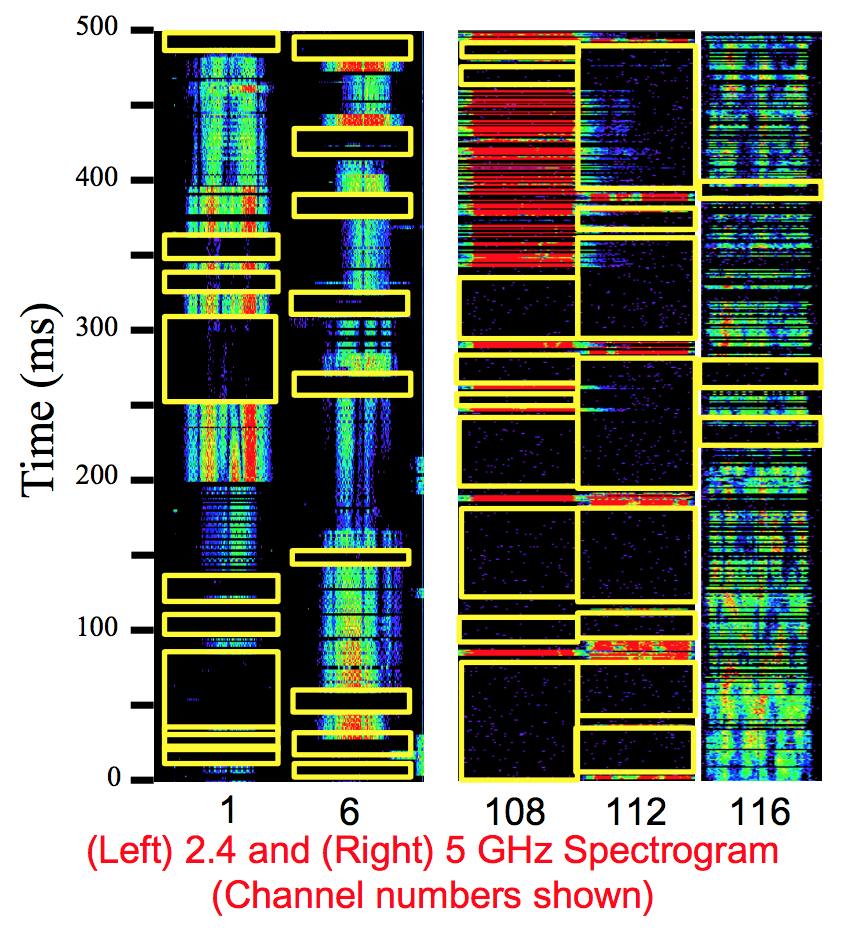A proposal for concurrent multi-band Wi-Fi was brought into the most recent meeting of working group IEEE 802.11. Similar to how mobile broadband can use multiple bands at the same time, the proposal would allow a Wi-Fi connection to use the 2.4 and 5 GHz bands simultaneously. Data would be split based on instantaneous channel conditions.
A second band provides more bandwidth for increased throughput. Greater availability of idle periods reduces latency. It provides frequency diversity not supported in Wi-Fi standards today.
The proponent is Japan’s Advanced Telecommunications Research Institute International (ATR). ATR presents results from measurements in a railway station that illustrate how the 2.4 and 5 GHz bands can be available at different times. The 500 millisecond snapshot shows many short idle periods of duration 10-70 milliseconds.
The proposal was brought into IEEE 802.11’s Wireless Next Generations (WNG) standing committee on May 9. That group receives the most forward-looking technical proposals in IEEE 802.11. The potential performance improvements, and their costs, are not clear. From the WNG meeting minutes, there was little objection but not much support. Most participants would like more information. There were no motions made on the proposal, so this submission can be considered for the information of IEEE 802.11. It will be up to ATR to provide additional information, gather support, and move it forward. A helpful next step would be providing simulation data quantifying the performance improvement.
A helpful next step would be providing simulation data quantifying the performance improvement. Regarding cost, ATR notes availability of concurrent multi-band technology developed for smartphones and automotive use-cases. That technology supports two simultaneous SISO channels on the 2.4 and 5 GHz bands. This proposal extends that to use both radios for the same data queue.
References:
ATR submission to IEEE 802.11 WNG (PowerPoint)

